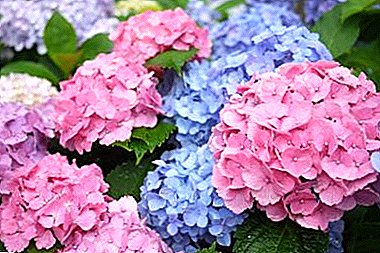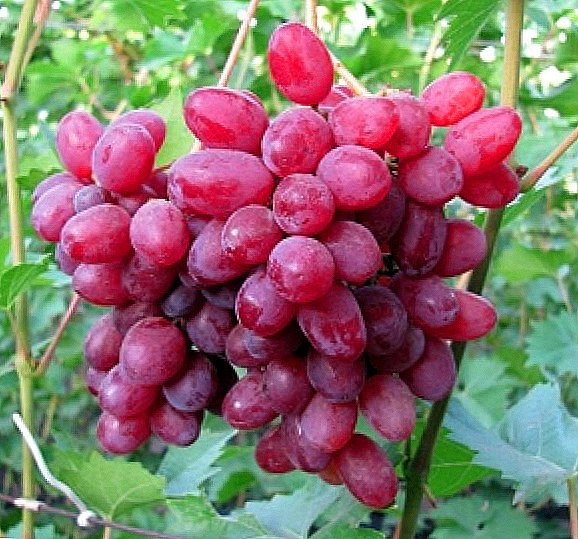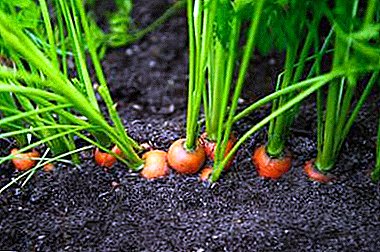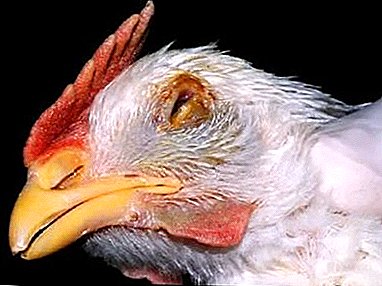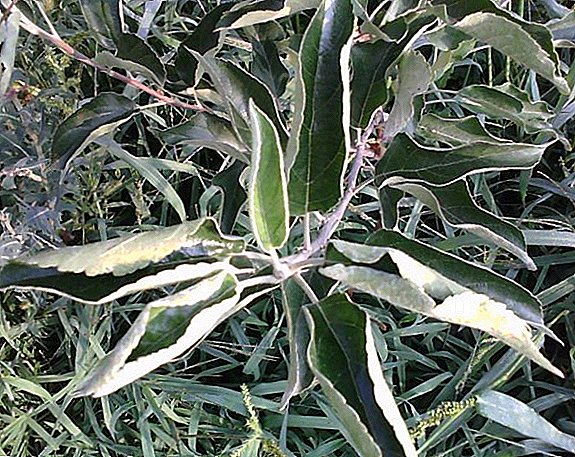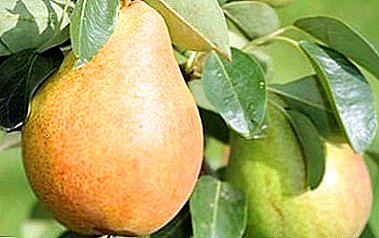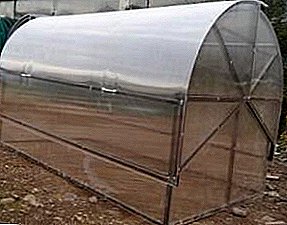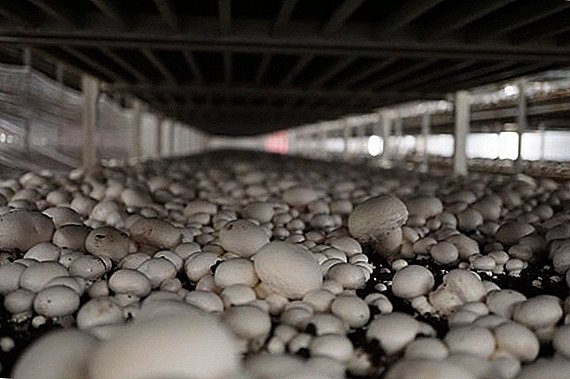 If you want to grow champignons at home, you need to first ask yourself questions: what is it for and what do you have for it? After all, in order to provide a delicious dinner for the family, a few boxes in the basement or garden beds will suffice.
If you want to grow champignons at home, you need to first ask yourself questions: what is it for and what do you have for it? After all, in order to provide a delicious dinner for the family, a few boxes in the basement or garden beds will suffice.
But if you decide to organize a large-scale production, you will need not only large, specially equipped premises, but also equipment, equipment, substantial material and labor costs, as well as knowledge. Each method of growing mushrooms has its own nuances, which will be discussed further.
In the garden, in the garden or in the garden
Growing champignons in an open area is not the easiest process, as these mushrooms do not like bright light. So if you want to do mushrooming at your summer cottage, look for a place in the shade - in the garden under the trees, shrubs, raspberries or behind the house. Over the bed you need to build a canopy to protect the soil from drying out. 
Before starting work on the site, you must first prepare compost for mushroom cultivation. The easiest recipe is 12 kg of straw, 8 kg of manure or litter. The components are laid in layers in a collar, then the mixture should be watered daily, avoiding drying out. During the preparation (22-25 days), the compost must be mixed several times.
The soil on the chosen bed needs to be plowed up, sown mycelium on its surface, cover it with a layer of compost 5-7 cm high and pour. In the future, you need to moisten the area as needed. Before the start of fruiting will have to wait 2.5 months. Champignon yield - 12 kg of mushrooms per month from a plot of 1 square. m. At one place mycelium can grow about five years.
Important! To avoid infection through direct contact with the soil, the compost in the garden can be laid on roofing paper or plastic wrap.Quite interesting is the cultivation of champignons on the same bed with vegetables. To do this, you need to prepare a bed 1.5 m wide, spread manure (cow or horse) into the soil and plant a squash or squash seedling. The beds are covered with a stretched film. Mycelium is planted when the seedlings take root. Vegetables and mushrooms will develop simultaneously.
If you do not know where to get mushroom mycelium, or you want to try to get it yourself, you can try the following method, for which you will need mushrooms collected in the natural environment. They must be removed in such a way that traces of earth and mycelium remain on the legs.
At the site you need to dig a trench with a depth of 20-30 cm, fill it with a mixture of manure and straw and pour 5-6 cm of forest or garden soil on top. Chop up the collected mushrooms with a knife, spread them out on the prepared surface and cover with a layer of soil. The first mushrooms will appear in a month.  In addition to breeding mushrooms in open areas, with the help of beds in the basement You can also start growing mushrooms. With this technology, the beds are placed on the floor covered with plastic wrap. The disadvantages of the method are a large amount of manual labor, difficulty in cleaning and a high possibility of spreading diseases and pests. The advantages of the method are minimal economic costs: you do not need to buy containers and racks.
In addition to breeding mushrooms in open areas, with the help of beds in the basement You can also start growing mushrooms. With this technology, the beds are placed on the floor covered with plastic wrap. The disadvantages of the method are a large amount of manual labor, difficulty in cleaning and a high possibility of spreading diseases and pests. The advantages of the method are minimal economic costs: you do not need to buy containers and racks.
Important! Champignons can be part of the decor in the garden, decorated in a forest style.
On shelves
The Dutch technology of cultivation of champignons on the shelves assumes the presence of special expensive equipment, mechanizing the technological process. This method is more suitable for large enterprises. With its help, the production area can be used more efficiently, saving space.
Racks for champignons - these are the same ridges, only a few floors. Blocks or boxes are laid out on numerous shelves. The disadvantages of the method are the high costs of equipment and the spread of disease across the horizontal and vertical installation. 
Did you know? There are several trends in global mushroom production. The Chinese approach is extensive: due to the many small enterprises with low investments and cheap labor, as a result, the volume of production is millions of tons. Moderate investment and some use of manual labor are the basis of the American and Australian approaches. The highest yields are shown by Dutch enterprises, based on large investments and high technologization of processes.
In containers
The container system as a whole is designed not for amateur mushroom production, but for business. This method is well mastered by large, mostly foreign (America, Canada) enterprises. It requires large capital investments, almost complete mechanization of the processes (filling and unloading compost, applying cover soil) and is economically advantageous for large volumes of production (thousands of tons of products per year).
For the cultivation of mushrooms, wooden containers specially treated against mold and fungi are required, in which the substrate for champignons is placed. Different phases of growth of fungi occur in different rooms, which allows you to optimally organize sanitary measures (washing, disinfection) and storage of containers.
However, this method can be adapted for home conditions, if you use one or more small containers. 
Important! For the mechanization of champignon cultivation processes, modern machines and mechanisms are used: a lift for filling and unloading compost, a conveyor for unloading spent compost and casing soil, a machine for loosening the soil, a sprayer moving between racks.
In bags
Recently, a well-established method of mushroom cultivation in bags of polymer film. It requires less investment than the container or shelf systems, and it can be used for small and medium businesses or at home. For this purpose, an equipped vegetable storehouse, a poultry house will be suitable. At home, it is better to use bags with a capacity of 25 kg.
Filled and seeded bags are set at a distance for easy care. Bags can also be arranged in tiers.
When using this method, it is easier to eliminate the lesion of infection or rot, in which case you can simply close and remove the problem bag, protecting the entire crop from infection. It is also easy to change bags with spent mycelium. If to build tiered bag holders, it is possible to use production areas much more effectively (in comparison with ridges).  The disadvantage of the bag method is that it is difficult to manually pack the packages with compost, but today you can find ready-made bags of compost and mushroom mycelium on sale.
The disadvantage of the bag method is that it is difficult to manually pack the packages with compost, but today you can find ready-made bags of compost and mushroom mycelium on sale.
Did you know? Mushrooms properly collect twisting, not cutting. Sprinkle the empty hole with soil and pour. Wash hands or use gloves before harvesting.
In blocks
 Many mushroom growers today acquire ready blocks for the cultivation of champignons from extruded substrate. In large briquette production, manure, seed husks, peat and sawdust are pressed into the briquettes.
Many mushroom growers today acquire ready blocks for the cultivation of champignons from extruded substrate. In large briquette production, manure, seed husks, peat and sawdust are pressed into the briquettes.
A significant advantage of the method is the lack of compost production, also large areas are not necessary for the cultivation of mushrooms; Since the blocks are fully prepared, planting the mushroom mycelium is not needed, it is already in them at an early stage of overgrowing. The weight of one unit ranges from 2.5 to 20 kg.
To work with such briquettes, you can use the technique for applying and loosening the casing layer; you will not need a technique for driving compost. To the question of choosing compost in briquettes should be considered carefully, in addition to a reasonable price, it must be of high quality. Change its composition or structure will not work.
Blocks are laid horizontally on shelves and pallets, and holes are made on their surface. To prevent the unit from drying out, it can be covered with burlap, paper or film. When the block is covered with mycelium, it is covered with topcoat and airing is stopped. Moisturize the units with a spray so that the moisture does not reach the substrate itself. The first crop of mushrooms can be harvested in 2-2.5 months.
Did you know? With properly created conditions and leaving a ton of soil, you can harvest up to 200 kg of champignons, that is, the return of blocks is 20%.Each method of mushroom cultivation has its advantages and disadvantages, so you can choose the most appropriate technology for yourself in terms of available resources and goals.


